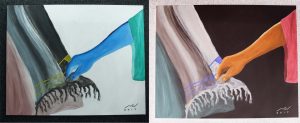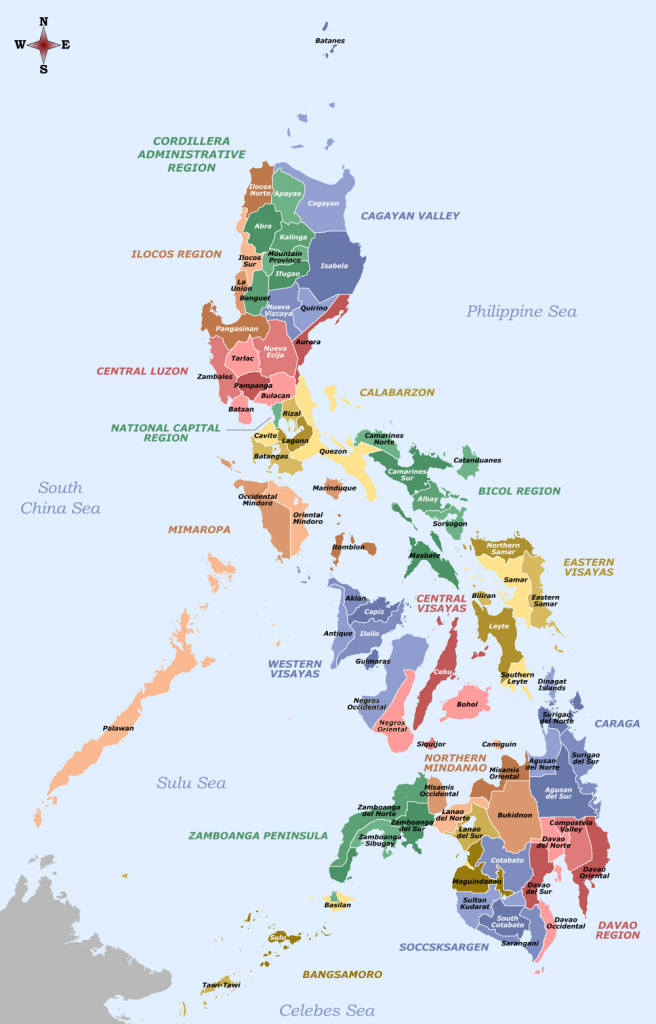
Title: The Hem | Medium: Acrylic on Canvas | Size: 16in x 20in | INVERT ART | By Judah Vince Cruz Valdez
It begins with an epiphany…
I received His Word in a place where we typically don’t expect a message from God—at a DIY public laundromat. As I was doing some laundry, I contemplated on lot of things, and I tempted to rant about them.
God interrupted my thoughts and reminded about a Biblical narrative found in Matthew 9:20–22, Mark 5:25–34, and Luke 8:43–48 where Jesus heals the bleeding woman or “the woman with an issue of blood.”
For 12 years, she had been dominated by that illness.
All her possessions were consumed. She grew worse overtime. But when she heard about Jesus, she came behind Him in the crowd and touched the hem His garment.
For she said, “If only I may touch the HEM of His clothes, I shall be made well.”
What? The Hem?!
In my mind, I had this one question “What’s with the HEM?”
She could have said,
“If only I may touch the FACE, the SHOULDERS, the FEET, the HAND”— known parts of the body as avenues for healing. But there was something about the HEM that the woman desired to touch. It led to her healing from Jesus.
In the PASSION Translation, Matthew 9:21 says, “For she kept saying to herself, If I could only touch his prayer shawl, I would be healed.”
The blue tassel on the corner of the prayer shawl was said to symbolize all the commandments and promises of God. See Numbers 15:38–40.
The Hebrew word for “HEM” or “fringe” or “border (of a garment)” can also mean “wing.” Some have interpreted Malachi 4:2 (“healing in his wings”) as a reference to the tassels of the prayer shawl.
The Hem of His robe
As God placed these words in my heart, He added another Biblical narrative where Isaiah saw the Lord seated on the Throne.
“In the year that King Uzziah died, I saw the Lord sitting on a throne, high and lifted up, and the train of His robe filled the temple.” (Isaiah 6:1 NKJV)
In another version, it says:
“In the year of King Uzziah’s death, I saw the sovereign master seated on a high, elevated throne. The HEM of his robe filled the temple.” (Isaiah 6:1 NET Bible)
The Hem equals breakthrough
Jesus suddenly stopped and said to His disciples, “Someone touched Me! Who is it?” (Luke 8:19)
The word “Hem” is also related to the word “Border.” Border by its definition means “Territory.”
“Who touched me?” is like saying, “Who entered my TERRITORY?”
The HEM of his robe filled the temple.’ (Isaiah 6:1)
His PRESENCE/Temple [Territory] is filled with BREAKTHROUGH – of MULTIPLE BREAKTHROUGHS
I believe that as we touch or enter God’s presence through worship and prayer, we touch the HEM, which symbolizes ALL Commandments and Promises of God. There will be multiple breakthroughs that will occur when we do this.
The Coming Breakthrough for the Philippines
While in the prayer room, the Lord showed me a picture of the geographical map of the Philippines. The shape looks like the posture of a woman reaching the Hem of Jesus’ garment. The second picture God showed me was that the train [the HEM] of His robe filled the Philippines.
Divine Parallel
| BLEEDING WOMAN | PHILIPPINES |
| issue of blood | The Philippines has an issue of blood [DNA/Identity]
|
| 12 years [governmental number] |
300 years + [dominated by the Spaniards]
|
| Posture of reaching the HEM/Fringe/Border | Posture of reaching the HEM/Fringe/Border
|
| BREAKTHROUGH | REVIVAL
|

Judah Vince Cruz Valdez
Based in Quezon City, Filipino artist Judah Valdez, also a graduate of Fine Arts in FEU, has been painting invert artworks since 2016. The inspiration behind this art style comes from a noticeable gap between the young and old generation. To him, the canvas represents the old generation, while smartphones represent the young ones. In a world filled with negativity, Judah desires to spark hope and reveal the Holy Scriptures through his creative expression.
For the painting to reveal its actual image, the usage of the "negative" or "invert" camera feature (found in smartphones) is needed.






